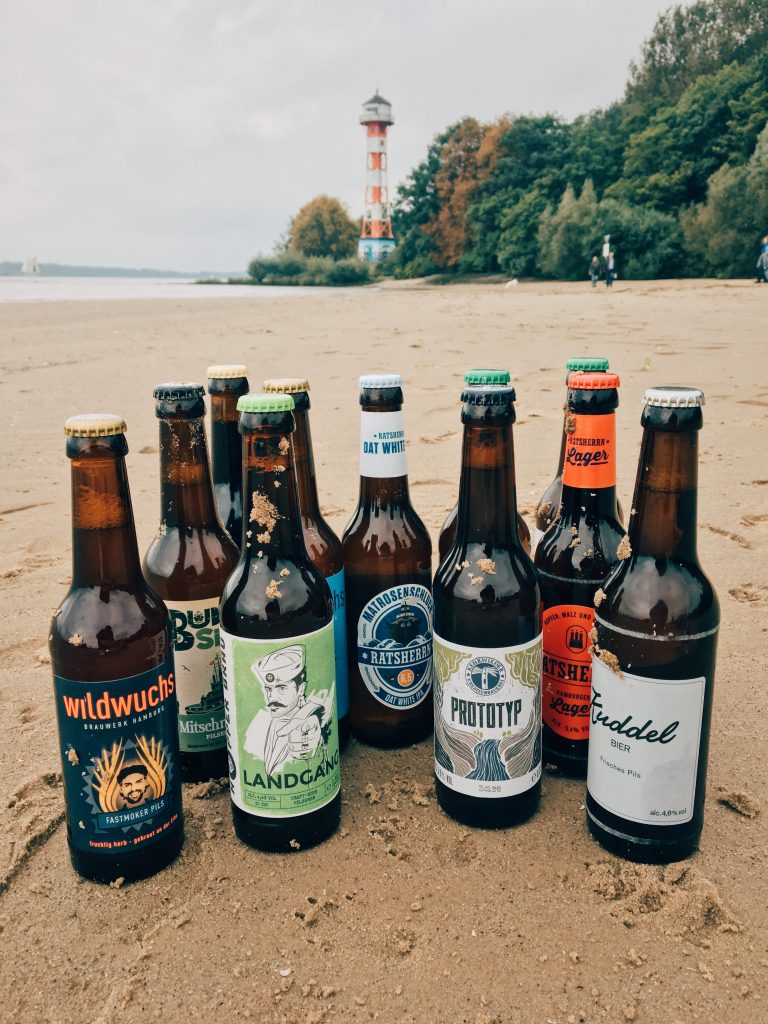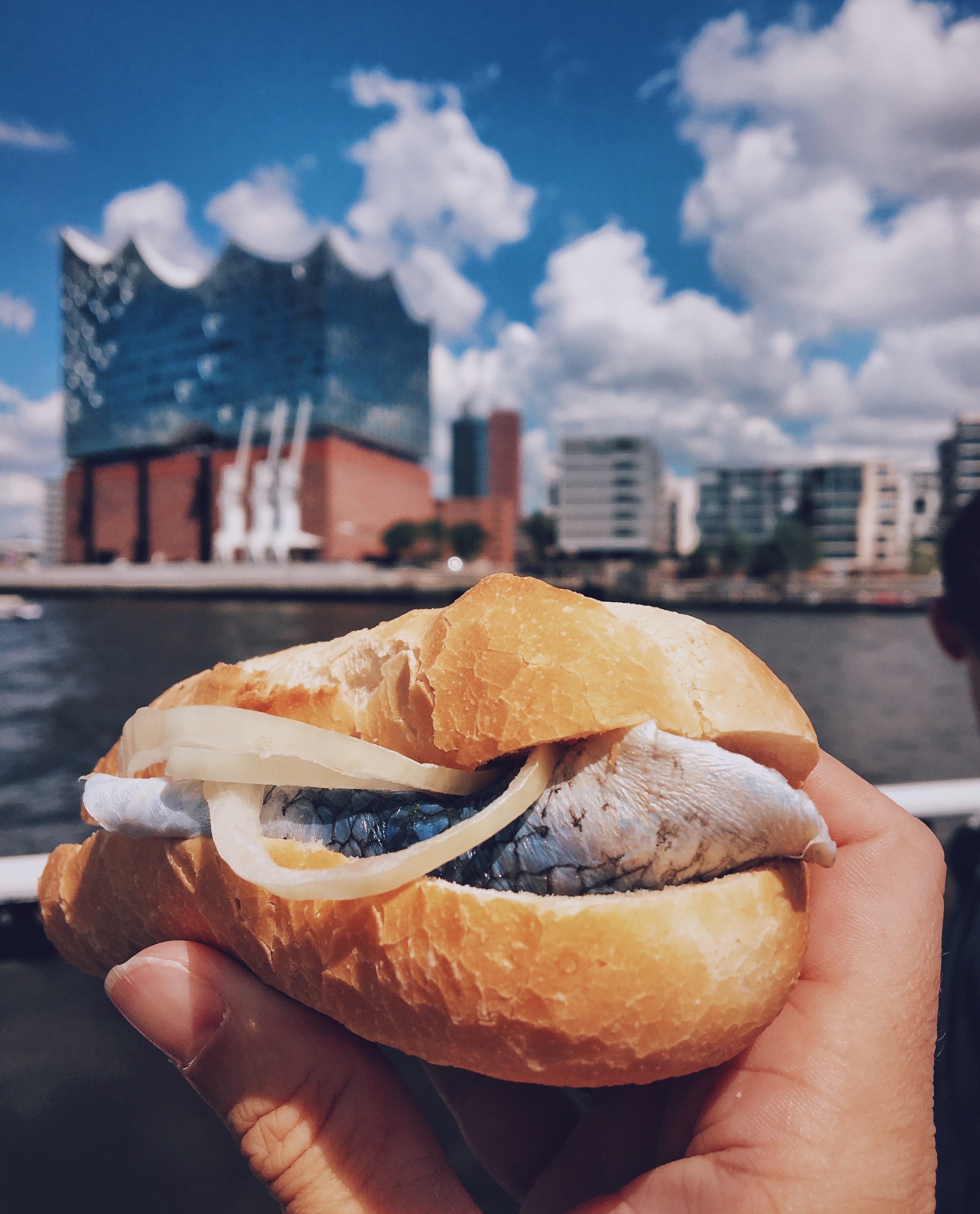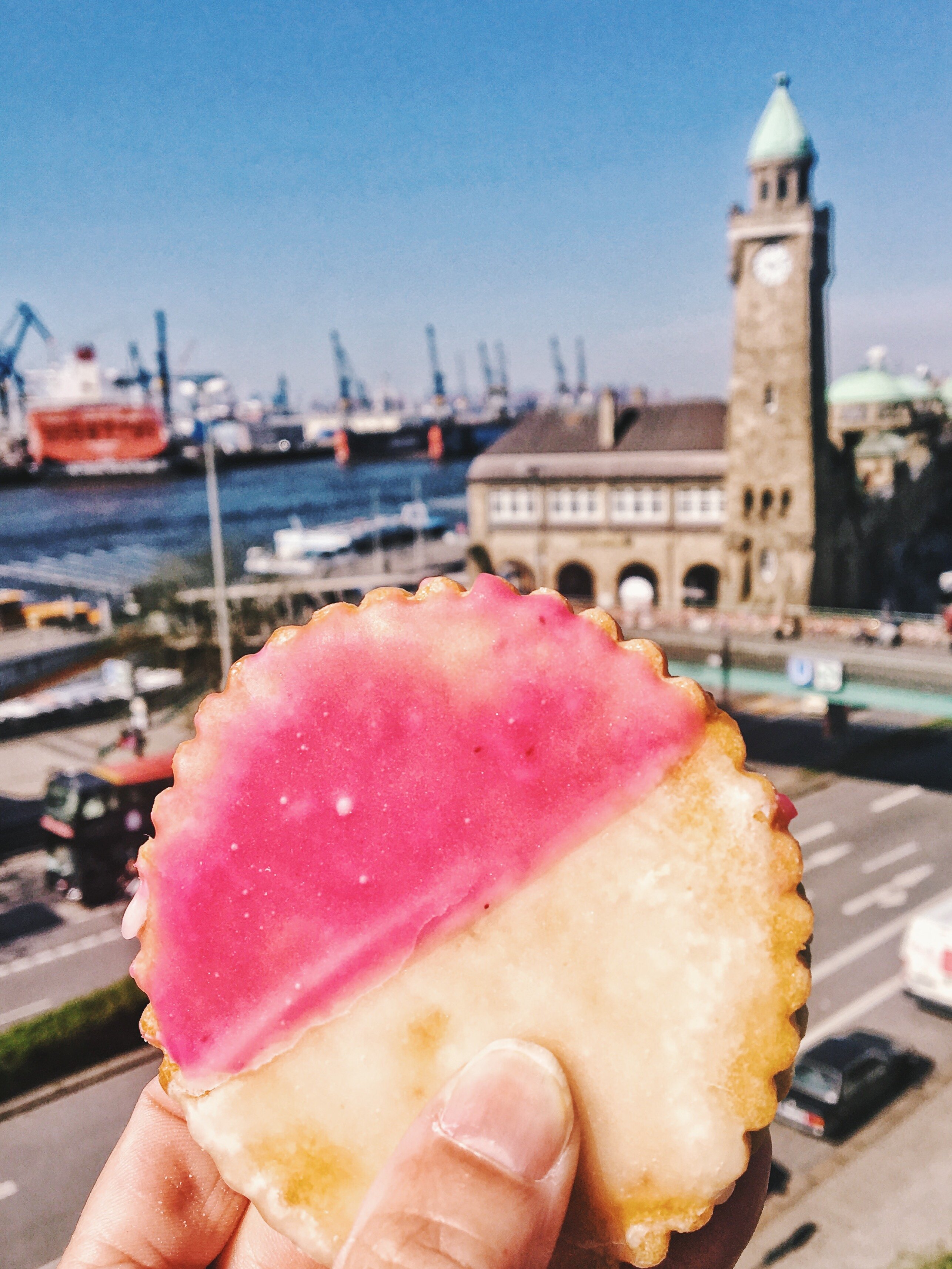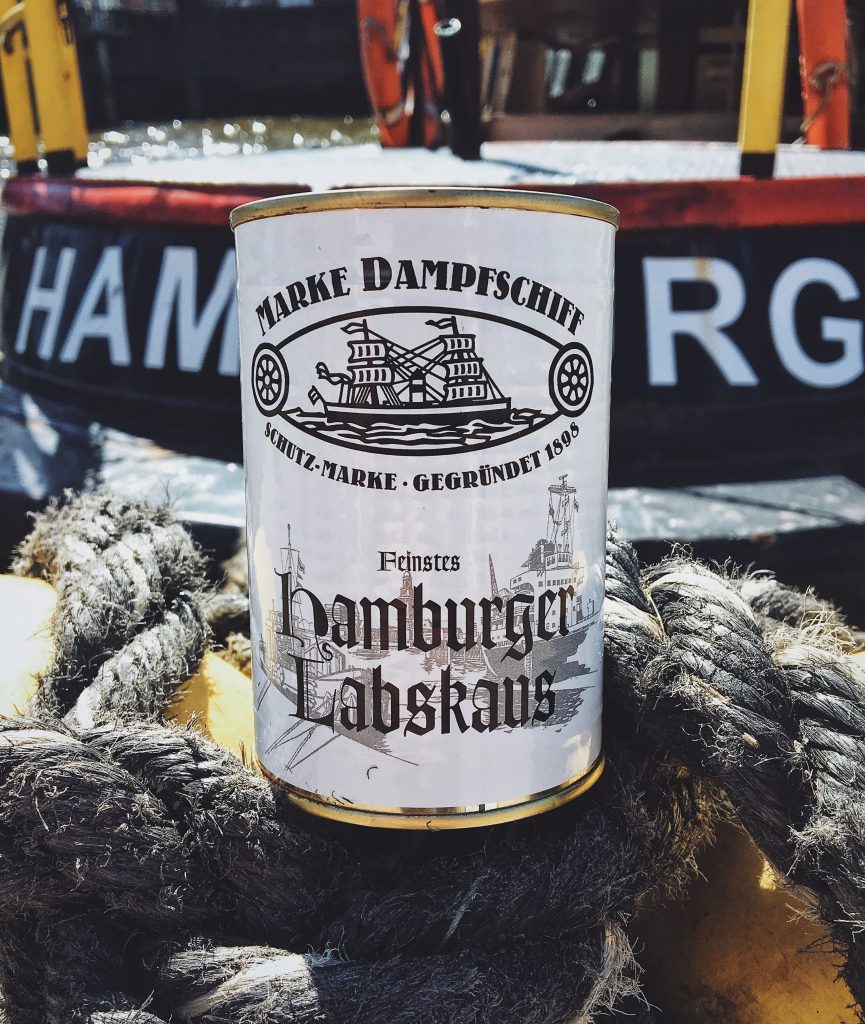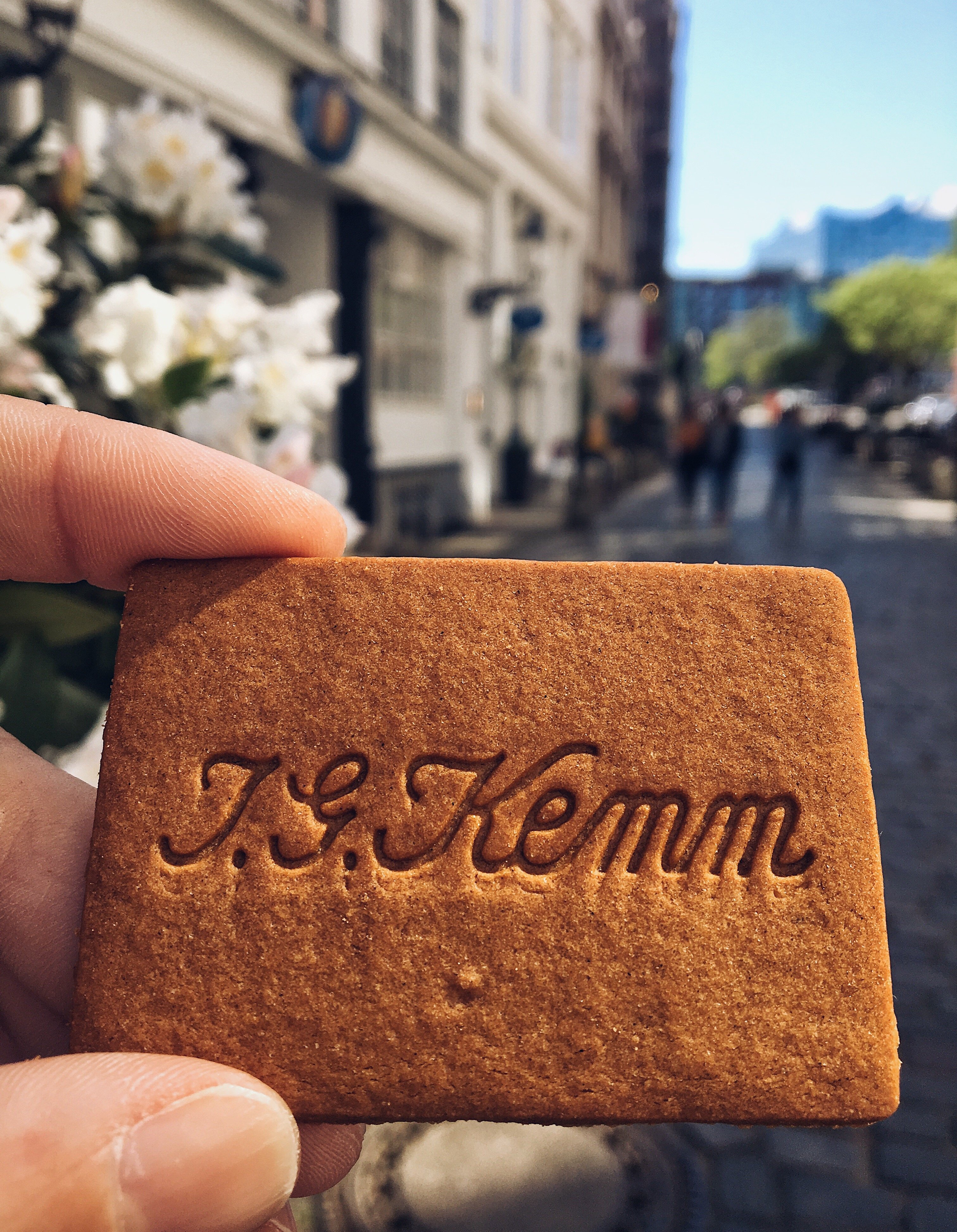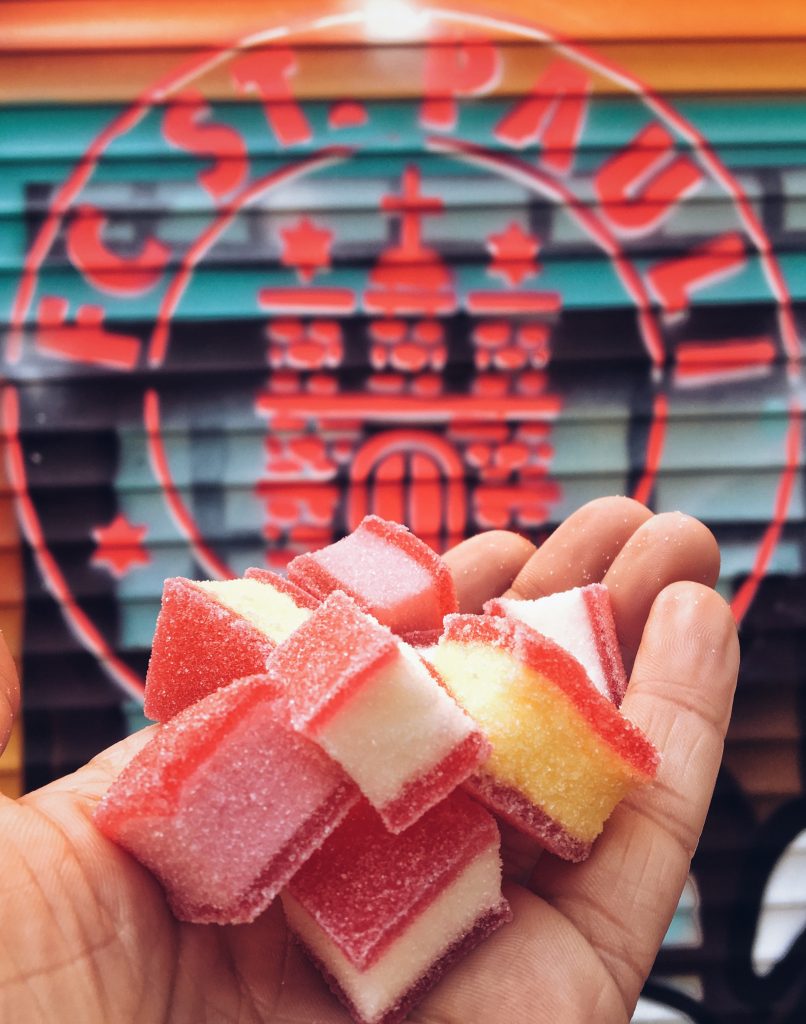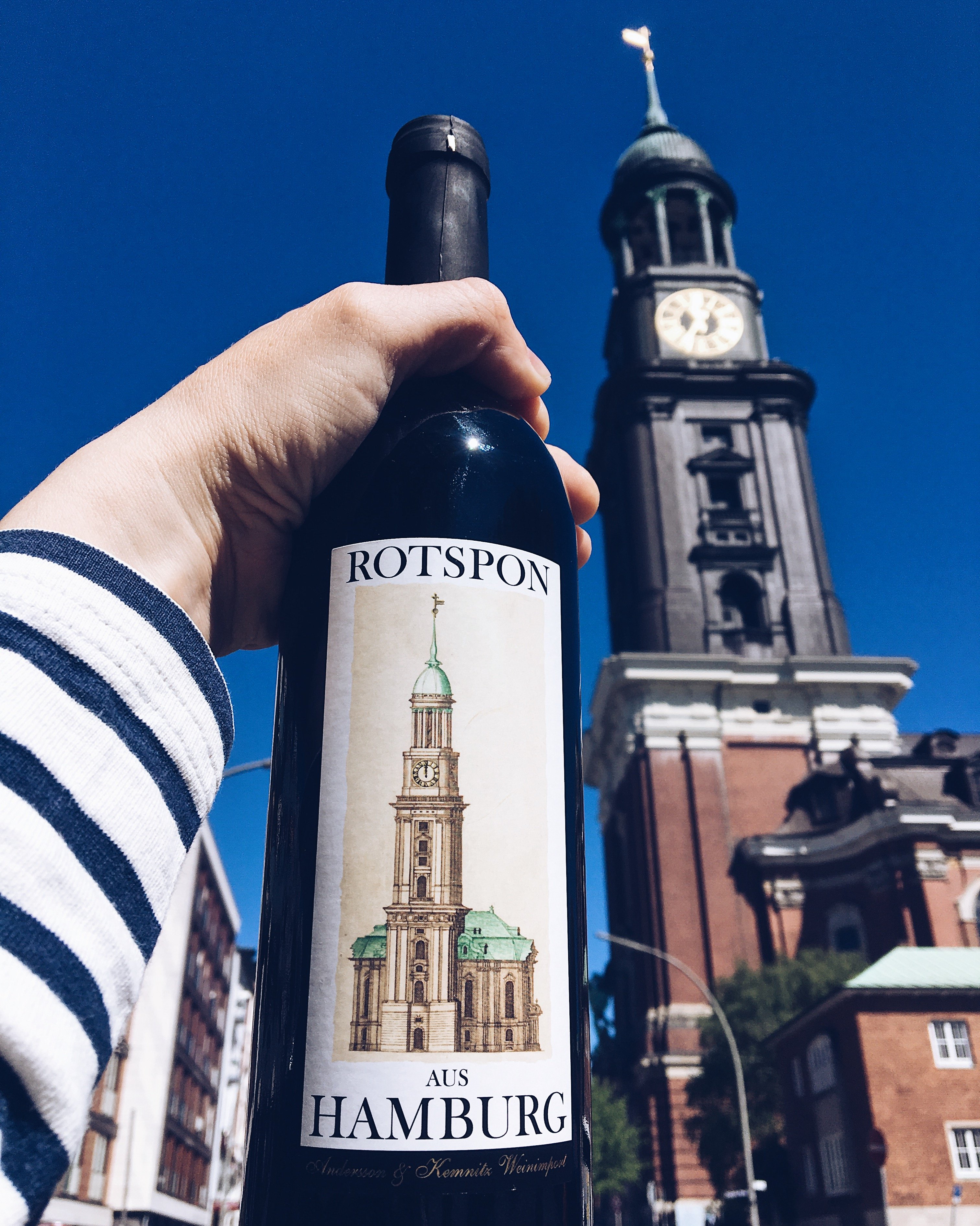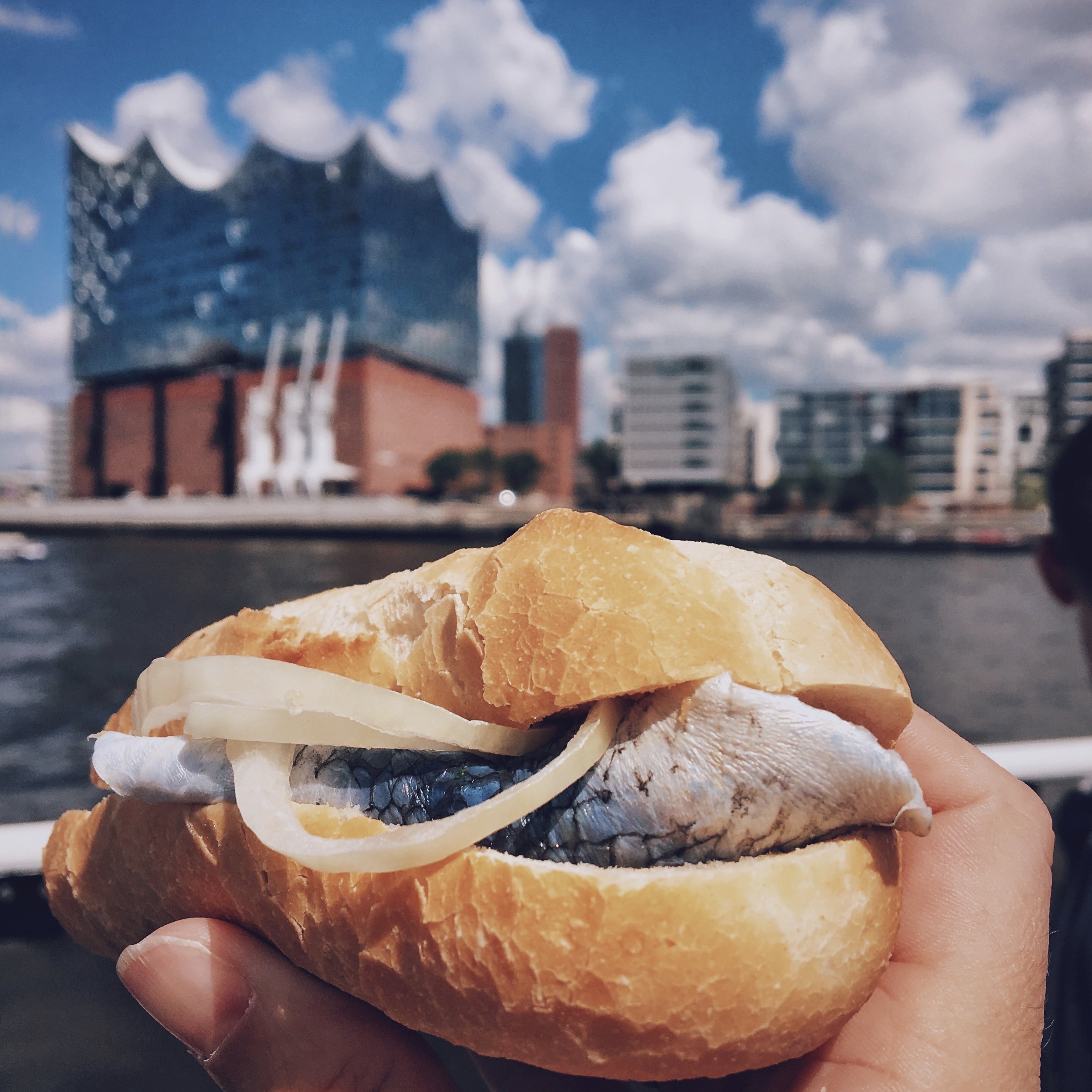
Local Food from Hamburg: A culinary voyage of discovery through the city
How does Hamburg taste? Which specialities are served to the locals on their plates or in their glass – and where is the best place to enjoy them? Curtain up for a bit of food porn from Hamburg!
TEXT & PHOTOS: SUSANNE KRIEG
Franzbrötchen
There are phases in my life (mostly stressful ones), as I eat a piece of this snail-shaped puff pastry with cinnamon and caramelised sugar every day. With an additional load of butter crumble. I was already waiting in line for Franzbrötchen at school during the break – and not only before math exams. Since then I wonder where the name comes from. Even experts are still in the dark, but it probably has to do with the “French period”, the occupation of Hamburg by Napoleonic troops at the beginning of the 19th century. Allegedly a Hamburg baker tried to please the occupying troops. Unfortunately, according to the tale, he had only one pan at hand, which is why his greasy croissants got out of shape – et voilà: The “Franzbrötchen” was created. Best epic fail ever, right?!
→ WERE TO TRY? At Schanzenbäcker at Holzbrücke 7. Here, the Franzbrötchen are not only particularly fresh, crispy and muddy inside – you also have a wonderful view over the Nikolaifleet (see photo) I Google Maps .
Bier
Hard to imagine: In the 14th century there were over 500 breweries in Hamburg… More beer than people?! Even in the city centre Hamburgers are said to have grown hop. And they already spooned up sweet beer soup for breakfast. The little ones liked it too. For lunch they had cereal and herring, plus, you guessed it: a good beer. And in the evening it often replaced the evening meal. Beer has always been the staple food of the Hanseatic people. In the past decades only Holsten remained as a brewery. But for some time now, a fresh breeze has been coming into town. Beer bars have opened and various craft beer brewers have settled on the Alster, Elbe and Bille. I regularly discover new bottles – to my delight they not only taste good, or at least: interesting – often they also look damn photogenic.
→ WHERE TO DRINK? You can buy many local beers in Hamburgs supermarkets. My personal favourite is Kuddel, because it tastes so malty. Hamburg beer is to be drunk – well, you guessed it – at the Elbe beach! This photo was taken in front of the lighthouse at the Falkensteiner Ufer.
Fish Bun
Some call it the tastiest snack in Northern Germany, others a cultural asset worthy of protection. But there are many iniquities. Here are a few laws you should be aware of:
- A good fish roll is not in the display, but is made fresh.
- A good fish roll does not need a lot of “fuss”, i.e. it does not need to hide under lettuce leaves, tomatoes and tons of remoulade.
- A fish roll belongs by the water, you have to be able to look at waves nearby – says fish roll pope Tilman Schuppius, author of the legendary Fischbrötchenreports.
→ WHERE TO EAT? I think you can still get the best fish sandwiches at Brücke 10, a kiosk at the jetties of Landungbrücken with seating. Unfortunately, the place is an open secret, therefore my tip: queue up, buy and then enjoy the fish bun during a trip with the HVV ferry rather than hope for a free seat. I Google Maps
Hanseat
Actually the Hanseat is an invention of a baker and merchant from nearby Lübeck: When Heinrich Schabbel (1861-1904) created the two round short pastry slices with serrated edges, he had perhaps also thought a bit of ship’s biscuit… But don’t worry, this maxi biscuit tastes much better than a dry rusk, after all it is held together by a layer of strawberry jam and is decorated with sugar icing, half white, half red – the colours of the Hanseatic city of Lübeck. The colour of Hamburg is also red. This is probably not the only reason why you can find the Hanseat at almost every baker in this city..
→ WHERE TO BUY? The best Hanseats I’ve bought at Bäckerei Rönnfeld, a traditional bakery and pastry shop in St. Pauli, which has been run by the same family for over 60 years. For this pic I staged my Rönnfeld-Hanseat at the St. Pauli Landungsbrücken I Google-Maps
Labskaus
This dish is only for the hard-boiled… The looks of my companions often enough suggest this to me when I treat myself to a portion of Labskaus every now and then. Their jokes often involve kitchen waste. Absolutely wrong! Hamburg’s national dish is made from potatoes, gherkin and beetroot, salt, pepper and beef and served with fried egg, a gherkin, beetroot slices and a herring. Yes, it is true that the ship’s cook used to use this food on long sea voyages to make the foul-smelling salted meat more edible by adding strong ingredients and to prevent mutinies. Chickens always sailed on ships back then. That’s why at least the fried egg was fresh. But today, even in the canned version, all ingredients should meet quality criteria. Labskaus in tins is also available in many Hamburg supermarkets, in organic quality e.g. also from delicatessen dealer Mutterland.
→ WHERE GET IT? In my opinion, there is a very tasty Labskaus in the Oberhafenkantine, a little house next to a railway bridge, which was once a coffee flap for harbour workers and was tilted by many storm tides I Google Maps
Kemm’sche Kuchen
Even Hamburg hospitals once served their patients this brown biscuit as “stomach bread”. Its history goes back to 1782, when Johann Georg Kemm in Hamburg Altona, Lange Str. 10, tried to create something similar to gingerbread. Today, this cinnamon and clove-scented pastry enjoys cult status throughout Hamburg. In 1903 Kemm sold the recipe and his shop to Heinrich Flentje, who built the Kemm´sche Cake and Rusk Factory in Lokstedt. After an interlude in Krefeld and a rescue by the Hamburg-enthusiastic entrepreneur Georg Parlasca, the cookies returned to Hamburg in 2015. Now the company is located in Deichstraße, where Parlasca has a small office in the picturesque Kolonialladen.
→ WO KAUFEN? In said Kolonialwarenladen in the Deichstraße I Google Maps
Coffee
I’d only be half as functional without coffee. It’s my pick-me-up and life buoy. Good thing I never run out of coffee in this town. After all, Hamburg is Europe’s largest transshipment centre for coffee beans – they are still stored in the Speicherstadt, where a constant bean scent seems to pass through. It was an Englishman though who opened Hamburg’s first tavern for coffee (and tea) near the Trostbrücke in 1677. Six years later Vienna followed with a coffee house. The ingredient caffeine and the decaffeinated bean were also discovered in Hamburg (not for me!). Half the city has to do with coffee, it seems. There are even jokes about it:
What does your son do?” asks one importer. “I had to let him study,” says the other one. “He’s too stupid to be in the coffee business.”
At almost every corner there are small, fine roasting establishments and the possibility to take a coffee with you on the way. But please do it correctly! Better take your own reusable cup (e.g. from Recup) instead of having a coffee-take-away served in a paper cup with a plastic lid!
→ WHERE TO DRINK? Recently, the Feinschmecker elected the roaster Elbgold the best in the city. In the beautiful shop in the Sternschanze, all ecological coffee beans are traditionally refined by hand in gas-powered drum roasters – under the eyes of the coffee drinkers. I Google Maps
Hamburger Speck (Bacon)
Hamburger Bacon and the Hamburger Dom belong together like ebb and flow. The sweet cubes are a real Hamburgensie and many know them mainly from Heiligengeistfeld, where three times a year the Dom, Northern Germany’s biggest fun fair takes its course. This bacon has only the layered look in red and white in common with the real smoked meat. Incidentally, the packs from the supermarket also contain variants with yellow and pink foam sugar. Anyway – I like them all!
→ WHERE TO NIBBLE? On the Hamburger Dom or get it from various providers on the net. But it is also available in the supermarket.
Rotspon
→ WHERE TO FIND IT? In every well-stocked supermarket in town (price: approx. 8-9 Euro). In Budnikowski stores with a large wine department there is also an organic version on the shelf.



